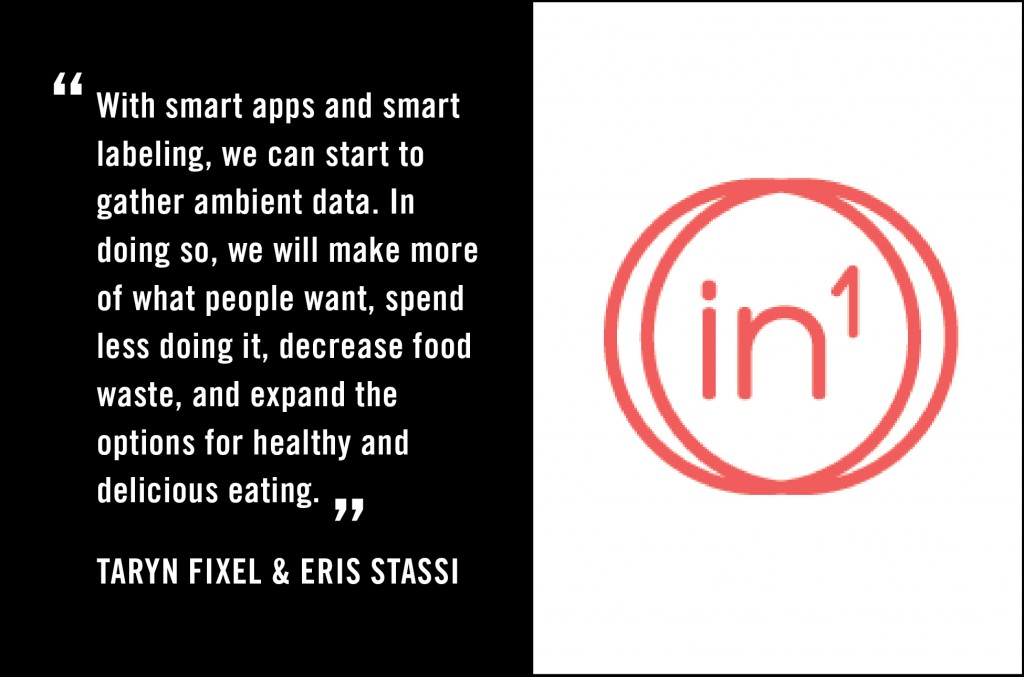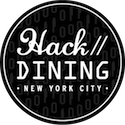Guest article by Taryn Fixel and Eris Stassi, Co-Founders, Ingredient1. The views expressed here are solely those of the authors and do not reflect the views of Food+Tech Connect.
We’ve all done this: Pick up a package in a grocery store, farmers market or pass by a restaurant menu. Pause. Read the label. Mentally calculate interest based on flavors, ingredients, nutrition and countless other claims like local, organic, and non-GMO. Then either walk away or place the item back on the shelf.
What happened in that 30 seconds of personalized decision-making that isn’t being captured for your future benefit?
People are picky. We have emotional and physical responses to food that are influenced by our genes, taste memory, environment and bio-individual dietary preferences.
If a food triggers an allergy, doesn’t taste good to us or lacks preferred nutritional content – there’s a low barrier to just walk away and look for another product. Though we are fortunate to have an abundance of food choices, understanding what motivates selection can be a problem for food creators trying to cater to the market.
When we place an item back on a shelf or cycle through four different places before sitting down for lunch – we’re making important decisions that food creators can use to improve their offerings. Let’s put that information to work!
Determining what consumers want based on point of sale information and social media leaves food creators in a reactionary position. Millions of dollars are wasted each year on developing products that do not satisfy market needs. Smaller manufacturers and restaurants, who have limited ability to test products, are put in the position of creating new products in a vacuum. With few inexpensive ways to test what the market wants, the chance for failure is significant.
Food creators are learning a lot from the Lean Startup school of thought. In both software and food, the ability to test market fit and quickly iterate before investing significant time and capital, determines the success of a product. The food industry has found creative shortcuts to A/B test their offerings, such as using food trucks to test variables in different geographic locations or Kickstarter to prove product demand.
The next phase in applying startup methodology can be unlocked by using technology and design to accelerate the consumer/creator feedback loop:
- Give food creators access to predictive analytics on geographic, ingredient, diet and allergen trends.
- Accurately measure and test variables in contained regions and environments.
- Most importantly, make food information and research transparent and easily accessible to consumers.
By consolidating food information and capturing every variable that a person would potentially use to make a decision, we can enrich our understanding of consumer intent. This will require full transparency around foods on the market, where they can be purchased, allergen warnings, ingredient sourcing, sustainability claims and nutritional value.
We are already making decisions about our foods every day, but with smart apps and smart labeling, we can start to gather ambient data. In doing so, we will make more of what people want, spend less doing it, decrease food waste and expand the options for healthy and delicious eating.
Hacking Dining is an online conversation exploring how we might use technology and design to hack a better future for dining. Join the conversation between June 2 – July 30, and share your ideas in the comments, on Twitter using #hackdining, Facebook, LinkedIn or Tumblr.
_______________
 Taryn Fixel – Taryn is an award winning documentary and investigative journalist who spent eight years creating original programming for CNN and CBS News with Christiane Amanpour, Anderson Cooper, and John King, among others. Her personal mission became the birth of Ingredient 1.
Taryn Fixel – Taryn is an award winning documentary and investigative journalist who spent eight years creating original programming for CNN and CBS News with Christiane Amanpour, Anderson Cooper, and John King, among others. Her personal mission became the birth of Ingredient 1.
 Eris Stassi – Eris is an industry-leading user experience designer who spent five years creating delightful designs for Apple, Inc in the Bay Area. Designed and led big data transparency as VP of UX for Morgan Stanley after moving to NYC. Believes food is the cornerstone of a healthy community.
Eris Stassi – Eris is an industry-leading user experience designer who spent five years creating delightful designs for Apple, Inc in the Bay Area. Designed and led big data transparency as VP of UX for Morgan Stanley after moving to NYC. Believes food is the cornerstone of a healthy community.
 Ingredient1 enables shoppers to discover food for their personal tastes & needs. You can find food based on specific preferences, including diet, ingredients, flavors, certifications, and sustainability claims and then learn where to buy them. Learn more and sign up for the beta at www.ingredient1.com.
Ingredient1 enables shoppers to discover food for their personal tastes & needs. You can find food based on specific preferences, including diet, ingredients, flavors, certifications, and sustainability claims and then learn where to buy them. Learn more and sign up for the beta at www.ingredient1.com.




